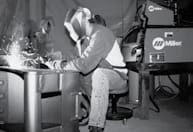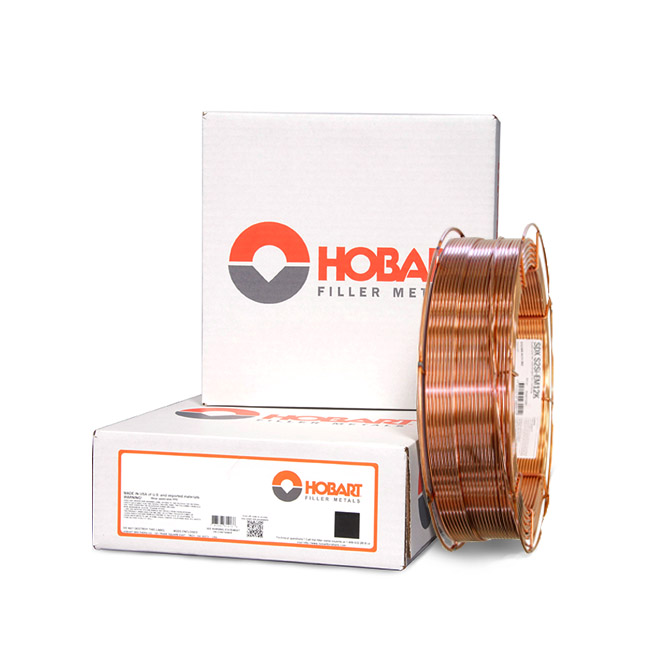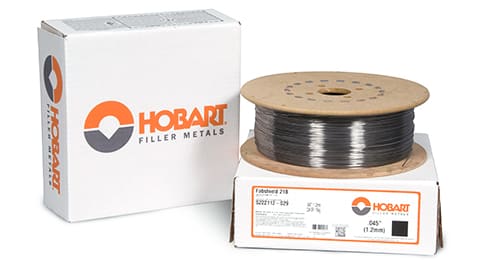Helpful Hints Basic Welding
Wire Welding – A Quick Review

Welding fabrication using the Hobart Ironman 240 with Hobart HB-28 solid wire
Wire welding is a semi-automatic process in which a continuous wire electrode is automatically fed through a welding gun. By simply positioning the gun near the workpiece and depressing the trigger, you can initiate an arc and maintain the automatic feeding of the wire electrode while you weld until you release the trigger.
Among the many types of wire electrodes available on the market, the two best suited for home and farm welding are solid wire electrodes and flux-cored wire electrodes. If you use a solid wire electrode, then you are doing what is known as MIG welding (properly known as gas metal arc welding or GMAW). If you use a flux-cored wire electrode,then you are doing flux-cored welding (also called flux-cored arc welding or FCAW).
Wire Electrodes
A solid wire electrode, like Hobart’s HB-28, requires use of a shielding gas to protect the molten weld puddle from impurities in the atmosphere, namely oxygen and nitrogen. As a result, no slag is produced. Common shielding gases for solid wire applications include 100% CO2, (carbon dioxide) and 75% Ar/25% CO2 (75% argon and 25% carbon dioxide); however, there are also other commercially available mixed-gas combinations that ca be used.
Helpful Hint #8
If you have to use an extensionRefer to the wire manufacturer’s recommendations for shielding gas or see page 19 for how a specific shielding gas can enhance the welding process.cord to get power to your welding equipment, make sure the cord is the correct size to carry the current from the outlet to the power supply!
Flux-cored wires, such as Hobart’s Fabshield 21B, are different from solid wires in that they have a center core of flux. This flux, when melted, creates a shielding gas to protect the molten weld puddle from oxygen and other impurities; hence, no external shielding gas is required.* Any impurities in the weld are brought to the weld surface in the form of a thin covering called slag which should be removed with either a chipping hammer or chisel and cleaned off with a wire brush.
*Flux-cored wires that do not require shielding gas are called self-shielded wires; however, there are flux-cored wires that do not require use of a shielding gas, but these are primarily used for industrial applications in which the shielding gas helps the weld metal attain certain characteristics.




